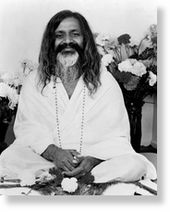
In this much-needed book, physicist Victor Stenger isolates and then debunks the claims of two kinds of "quantum belief". One he calls "quantum theology" because it offers quantum physics as a way for God to act in the world without violating natural laws. The second is "quantum spirituality", which is rooted in the even vaguer notion that quantum physics connects the human mind to the universe, allowing us to create our own reality.
This was the theme of the wildly popular film What the Bleep Do We Know!?, which grossed over $10 million and was responsible for creating widespread misunderstanding of quantum physics. With Stenger in charge, though, we are on sure ground. He adds even more value by weaving a thorough beginner's course in quantum physics into his debunking exercise.
Like most scientists, Stenger believes most religious claims can be dealt with scientifically, so beliefs such as creationism or astrology aren't immune to science, they are merely wrong. Take the tale of Maharishi Mahesh Yogi, the Indian yogi (and physics graduate) who taught transcendental meditation and won a global following after the Beatles joined his Academy of Meditation in India. Maharishi claimed that transcendental meditation gave practitioners access to the "quantum field of cosmic consciousness". This, he said, was identical to SU(5), the model physicists were then investigating in their search for a grand unified theory. Sadly for cosmic consciousness, real experiments later falsified SU(5).
As for the notion of creating our own reality, this relies on brains in some sense operating quantum mechanically - and there is no evidence for this. As Stenger says, the scales of distance involved in brain processing are more than a thousand times too large for quantum effects to necessarily come into play. Likewise, physicist Max Tegmark has shown that the timescales of events in the brain are 10 or more orders of magnitude longer than the timescales of "decoherence", the process by which quantum effects "leak" out of the quantum system.
Meanwhile, those looking for generalised spiritual meaning tend to seek holism in quantum mechanics. Stenger cites the famous Einstein-Podolsky-Rosen paradox. This 1935 thought experiment outlined a known conundrum in quantum mechanics and concluded that we must accept one of two explanations for it: either that quantum mechanics is a complete theory - despite its probabilistic dice-throwing; or that beneath it lies some deterministic reality, but one which is "non-local", that is, one where signals can travel faster than light speed, thereby violating Einstein's special theory of relativity.
Most physicists chose the first option, except David Bohm, who famously came to believe in a non-local universe. Stenger sees little of mystical import in these experiments. They are widely discussed in the literature of quantum spiritualism, but real physicists "are underwhelmed... Quantum mechanics... passed yet another empirical test. Ho hum."
Even though he skips rather dizzyingly between traditional religious beliefs, quantum spirituality and quantum physics itself, Stenger is a pleasure to read. And, pleasingly, the title Quantum Gods: Creation, chaos and the search for cosmic consciousness sounds just crackpot enough to attract those readers who will benefit most.



John Hagelin, Ph.D. is a world authority on the foundations of human consciousness. Under the guidance of Maharishi Mahesh Yogi, he has made major contributions towards the systematic reformulation of the ancient Vedic science of consciousness. An expert in the area of unified quantum field theories, Dr. Hagelin's scientific contributions in the fields of particle physics and cosmology include some of the most cited references in the physical sciences. He is co-developer of what is now considered the leading contender for a grand Unified Field theory, and he is dedicated to applying the latest scientific understanding of natural law for the benefit of the individual and society
The Share Guide: Is the Unified Field another term for the Cosmic Consciousness?
Dr. John Hagelin: The Unified Field is the deepest level of physical reality discovered by Science. It is a universal field of Nature's intelligence that governs the vast universe with perfect order. Cosmic Consciousness is the state of Enlightenment, a state of human awareness in which the individual mind directly experiences (and identifies with) universal intelligence. In this state, the individual ego expands to become Cosmic. Such individuals are Cosmic individuals, and their actions are spontaneously supportive to all life.
The Share Guide: I'm interested in the connection between individual meditation and the Unified Field. How does it work, in relation to daily meditation practice? And how does it translate into creating peace in the world?
Dr. John Hagelin: The connection is simple. During meditation, consciousness quickly expands to experience universal consciousness (the Unified Field). The individual consciousness temporarily identifies with universal consciousness in the simplest state of awareness--the state physiologists call "pure consciousness." Not all meditation techniques achieve this pure consciousness experience, however. My remarks pertain to meditation practices that provide this fundamental experience in an effective and efficient manner. Among such practices, Transcendental Meditation (TM) developed by Maharishi Mahesh Yogi is the most extensively researched and widely practiced. It is safe, highly effective, and universal; it works for people of all religious persuasions and cultural backgrounds.